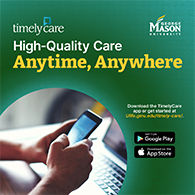This edition of the Thriving Together Series is adapted from The Well-Being Lab 2020 Workplace Report, a collaboration between our center and The Well-Being Lab (a Michelle McQuaid program). The report is based on two surveys of more than 1,000 workers each, throughout the United States.
A Need for Benefits and Skills
Most (93%) workplaces provided at least some forms of well-being support. Healthcare and health services benefits (e.g., telehealth, virtual healthcare, PPO, HMO, prescription, dental, vision), paid leave (e.g., vacation, sick leave, holidays), 12.5% flexible work (e.g., telecommuting, flexible scheduling), and employee assistance programs (EAP) were the most likely to be offered.
Workers reported higher levels of engagement when they had access to three or more forms of well-being support. However, for workplaces that were not able to afford multiple forms of well-being support, we found that caring managers compensated for fewer benefits.
Workers who were not feeling bad, but just getting by or really struggling were significantly more likely to be in workplaces where no support is available.
When it comes to building workers’ skills for caring for their well-being, workers were more likely to be consistently thriving when they had well-being training, well-being coaching, and wellness programs to support their well-being.
Seeking Help
Workers who asked others for help when struggling were significantly more likely to experience higher levels of well-being. Yet almost one in five workers indicated that they would never tell anyone that they are struggling. Notably, workers who were not feeling bad, but just getting by or those who were really struggling were less likely than other workers to seek help, suggesting that those who would benefit from support the most are the least likely to ask for it.
Pointing again to the importance of relationships, workers were most likely to turn to someone outside of work for help, even though people outside of work were generally less effective in supporting workers’ ability and motivation to care for their well-being. Within the workplace, team members were the most likely people workers turned to for help, followed by bosses. Both were perceived to be good forms of support.
It is worth noting that less than 6% of American workers would turn to their HR team when they are struggling, even though HR teams were considered a good source of support. The exception was for concerns about losing one’s job, then HR Teams and EAP services became the most likely sources workers turned to for help.
Conclusion
Caring for workers’ well-being requires diverse and sustained support at the individual, team, and whole workplace levels to create a thriving workplace environment.
Encouraging managers to authentically and regularly express care, compassion, and appreciation for their workers may be useful for boosting both well-being and productivity during this challenging time.
Does your well-being strategy prioritize diverse forms of support to help workers, teams, and your workplace care for each other’s’ well-being?
Additional Resources
Learn how to apply the science of well-being to your leadership, in our Leading to Well-Being certificate programs.
Measure your well-being through the free PERMAH Well-Being Survey. See how you’re doing when it comes to your levels of thriving and struggle, and your abilities and motivation to care for your well-being. You can even create a free personal well-being plan, drawing on more than 200 evidence-based well-being actions. You can also use this tool for teams or entire workplaces.
Write one of these Thriving Together Series features! We’re looking for contributions on all topics related to well-being. Read other Thriving Together Series articles here and contact us at [email protected] for guidelines. Thank you for helping our Mason community thrive together online!






















